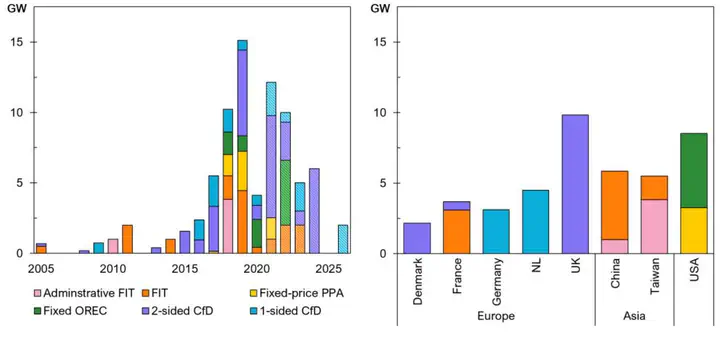Policy choices and outcomes for offshore wind auctions globally
 Image credit: Jansen at al.
Image credit: Jansen at al.Abstract
Offshore wind energy is rapidly expanding, facilitated largely by competitive procurement schemes (such as auctions) run by governments. We provide a detailed quantified overview of these schemes, including geographical spread, volumes, results, and design specifications. Our comprehensive global dataset reveals that procurement schemes are designed heterogeneously. Although most remuneration schemes provide some form of revenue stabilisation, their policy design varies and includes feed-in tariffs, one-sided and two-sided contracts for difference, mandated power purchase agreements, and mandated renewable energy certificates. We review the schemes used in eight jurisdictions across Europe, Asia, and North America and evaluate the bids in their jurisdictional context. We comment on whether bids are reportedly cost competitive, the likeliness of timely construction, whether strategic bidding may have been involved, and other jurisdictional aspects that might have influenced the procurement results. We find that offshore wind energy farms in different jurisdictions and over time are exposed to market price risks to a varying extent, with less mature markets tending toward lower-risk schemes. Our data confirm a coincidence of declining procurement costs and growing diffusion of competitive procurement regimes.